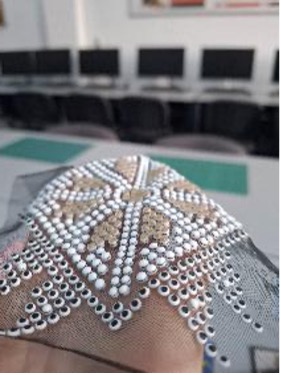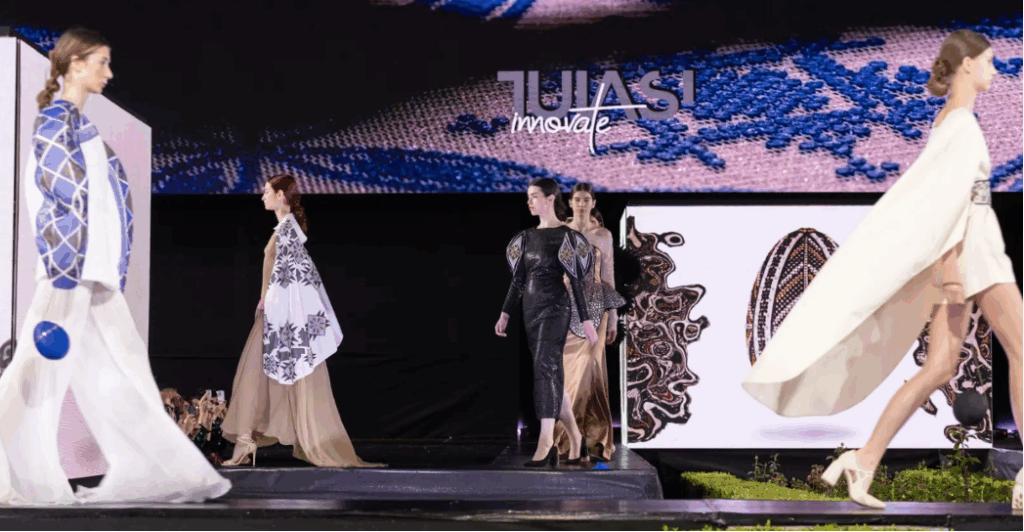By Aura Mihai, Antonela Curteza, Radu Firicel, Iuliana Streba & Dorin Ionesi (Gheorghe Asachi Technical University of Iasi)
Where Tradition Meets Innovation
In today’s world, we face many problems like climate change, fast disappearing traditions, and fast-growing technologies. These challenges don’t only affect the environment or the economy, they also threaten the way we express who we are through culture, design, and making. Many traditional crafts are at risk of being lost, while modern industries often focus more on speed and profit than on sustainability or heritage. That’s why we must ask ourselves: can we really train young people, future artisans, to solve these problems while also keeping their cultural roots? The CRAFT-IT4SD project gives a positive answer. Yes, we can. More than that, we must do it.
This project presents a new vision: craft is not only something from the past, but a living knowledge system that can evolve. It can become a powerful tool for both sustainability and innovation. In Romania, the team from “Gheorghe Asachi” Technical University of Iasi worked together with artisans, students, designers, engineers, and small businesses to create fashion capsule collections. These were not ordinary collections, they mixed folk motifs from Moldavia, Bucovina, and the ancient Cucuteni civilization with 3D printing, digital design, and low-waste materials. The collections, signed by Theona Chelariu, Crina Croitoru, Alina Iacob, Briada Zaplitnii, Raluca Lupu, Iuliana Streba, and Radu Firicel, represent a creative fusion where tradition meets technology in wearable, meaningful, and sustainable garments.
These collections were more than just clothes, they told stories. They were inspired by symbolic objects like the painted Easter egg, the Romanian “Ia” blouse, or the ceramic patterns of Cucuteni culture. They used sustainable materials such as hemp, wool, and recycled textiles. They included accessories and design elements made by additive manufacturing, demonstrating how 3D printing can bring new life to old symbols while reducing environmental impact. Through this pilot, young people didn’t just learn technical skills, they learned how to protect culture, respect materials, and co-create with communities.
Connecting Past and Future: How Crafts Become Sustainable
Craftsmanship was always close to nature, using local materials, making durable items, wasting very little (Neumüller et al., 2014). Traditional crafts followed the rhythm of the land and the seasons, relying on skills passed down through generations and materials found nearby, like wool, hemp, or natural dyes. In the Romanian pilot of the CRAFT-IT4SD project, this sustainable mindset was not only respected but reimagined with the help of modern technologies. Students, artisans, and researchers came together to create three unique capsule collections: one inspired by Moldavian folk clothes and geometric embroidery, one by the vibrant patterns of painted Easter eggs from Bucovina, and one by the ancient symbols of the Cucuteni culture, one of Europe’s oldest civilizations.
These collections included modern innovations like 3D-printed (Malengier et al., 2018; Redondo et al., 2020), digitally embossed textures, and custom-designed elements inspired by heritage motifs. For the Easter Egg collection, students worked closely with experts and gathered visual inspiration from the Egg Museum in Vama, a unique cultural institution preserving thousands of decorated eggs from all over Romania. The symbolic patterns, colors, and meanings found in these traditional eggs were studied, digitally adapted, and transformed into wearable pieces of art.
Some motifs were scanned and converted into vector files before being used in 3D-printed molds for shaping accessories. This process gave a new dimension, both literal and conceptual, to designs that usually appear only in two-dimensional embroidery or painted eggs. These projects proved that 3D printing is not just for modern art or big industries, it can also help preserve old knowledge and make it more visible and accessible for new generations (Singh et al., 2021; Spahiu et al., 2017; Döpke et al., 2016). Through careful material choices and efficient design, the collections minimized waste and demonstrated how traditional values like “no waste” and repairability can be enhanced with today’s tools. In this way, craftsmanship and technology worked hand-in-hand, not in opposition, but in harmony, for a more sustainable and culturally rich future.


Source: Preparation of CRAFTIT-4SD capsule collection at TUIASI
A very special part of the Romanian pilot was the way it brought together so many different people: students from design, management, engineering, local artisans, museum experts, companies, and university professors. All of them worked together, learned from each other, and create real clothes, accessories, and stories.
For example, students used CAD software to create digital files for 3D-printed accessories and decorative elements, learning how to translate traditional motifs into modern, printable designs. They experimented with different materials and printing techniques to see how symbols from Romanian heritage, like those found on traditional clothing or painted Easter eggs, could be adapted into wearable pieces. This kind of “learning by doing” showed them that 3D printing is not just a technical skill, but a creative tool for preserving culture and reducing waste. It helped them realize that sustainability is not just an abstract concept, it can be designed, printed, and worn when technology and tradition work together.
Workshops were organized to include cultural storytelling, practical demonstrations, and fashion show presentations. This format gave students confidence and showed artisans that their work is still very valuable, even in high-tech fashion.
Why 3D Printing Helps Sustainability
A very modern part of the project was additive manufacturing. Many people think 3D printing is only for high-tech or engineering, but here it was used in fashion. The reason is simple: it helps create very detailed decorations without making a lot of trash. Also, many of the printed parts can be reused, recycled, or repaired.
In the Easter Egg collection, 3D printing was used to copy the symbols from real Romanian decorated eggs, which are full of meaning. The students translated these symbols into digital designs and printed them on fabric in a way that looks both old and new. The final clothes were beautiful, creative, and full of deep cultural meaning.

Source: Romanian Creative Week, https://www.tuiasi.ro/noutati/colectie-vestimentara-realizata-de-studentii-facultatii-de-design-industrial-si-managementul-afacerilor-prezentata-la-romanian-fashion-week-2025/
Conclusion: A Model for the Future
From what we see in Romania, the answer is clear: yes, we can train future artisans to bring sustainable solutions to creative communities. But to do that, we must mix old and new, respect tradition while using the tools of the future. Projects like CRAFT-IT4SD show us how to build this bridge.
We need more universities to open labs for crafts. We need more artisan workshops where students can learn directly from skilled practitioners. We need creative people who are not afraid to try new things, but also not afraid to honor the past.
Fashion is not only about what we wear. It is about who we are. When tradition and technology work together, we can create not only beautiful clothes, but also a better world.
References
Malengier, B., Hertleer, C., Cardon, L., Langenhove, L, 3D printing on textiles: testing of adhesion. Journal of Fashion Technology & Textile Engineering, s4, 2018
Redondo, F. L., Giaroli, M. C., Villar, M. A., de Freitas, A. G. O., Ciolino, A. E., Ninago, M. D., Direct 3D printing of poly(lactic acid) on cotton fibers: characterization of materials and study of adhesion properties of the resulting composites. Macromolecular Symposia, 394(1), 2020
Singh, A., Yadav, P. K., Singh, K., Bhaskar, J., Kumar, A., Design of 3D printed fabric for fashion and functional applications. Lecture Notes in Mechanical Engineering, 729–735, 2021
Spahiu, T., N. Grimmelsmann, A. Ehrmann, E. P., Shehi, E., Effect of 3D printing on textile fabric. Engineering and Entrepreneurship, November, 2017
Döpke, C., Grimmelsmann, N., Ehrmann, A., 3D printing on knitted fabrics, 48th IFKT Congress, Mönchengladbach, Germany, 2016
